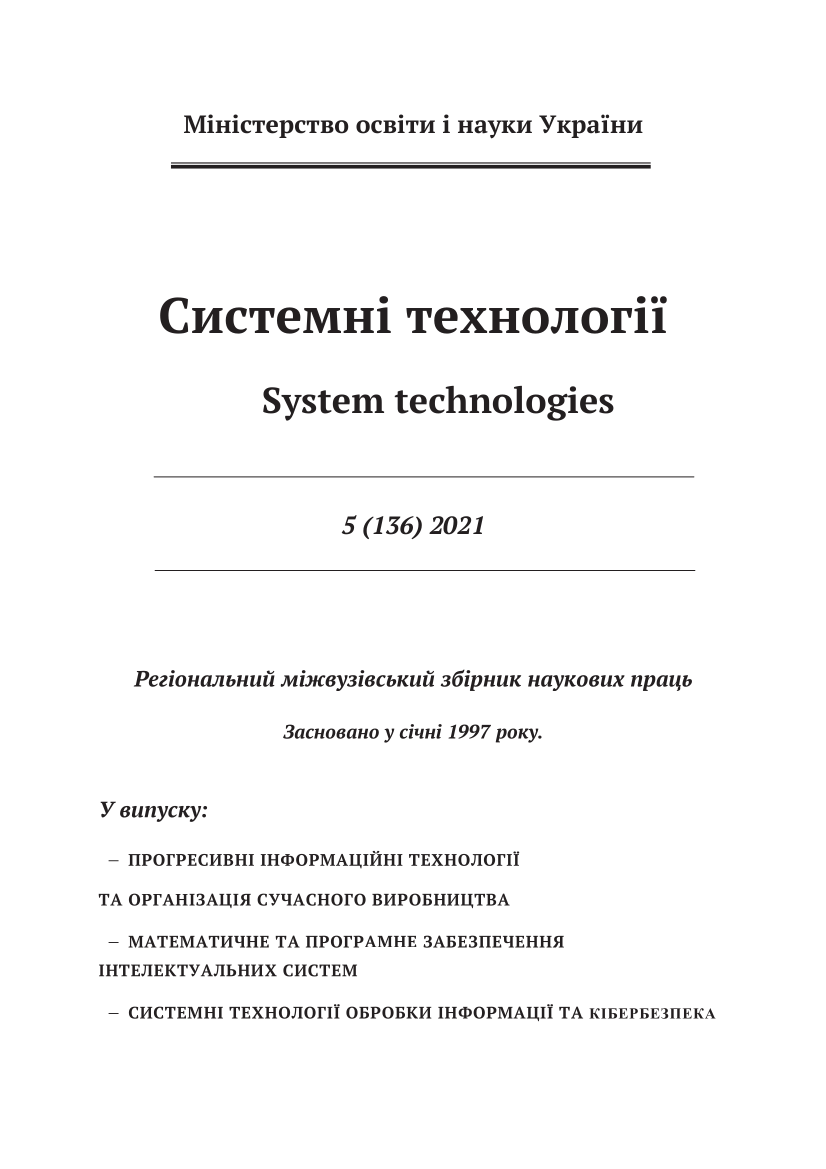ПОРІВНЯЛЬНИЙ АНАЛІЗ ПОКАЗНИКІВ NDVI ДЛЯ РІЗНОЧАСОВИХ ОПТИЧНИХ ТА РАДАРНИХ ЗОБРАЖЕНЬ
DOI:
https://doi.org/10.34185/1562-9945-5-136-2021-02Ключові слова:
супутниковий моніторинг полів, озима пшениця, радарні дані, оптичні даніАнотація
Зміни кліматичних умов на планеті суттєво ускладнюють ведення сільського господарства. Це призводить до зниження продовольчої безпеки по всьому світу. Ефективним рішенням є застосування космічних технологій, що дозволяють проводи-ти супутниковий моніторинг стану с/г рослин та вирішити важливі агротехнічні за-дачі. Сучасні дослідження підтвердили, що для моніторингу полів необхідні рішення, які дозволять уникнути впливу хмарності на побудову часових рядів. У роботі проведе-но порівняльний аналіз показників нормалізованого відносного вегетаційного індексу (NDVI) для різночасових оптичних та радарних зображень зі супутників Landsat-8, Sentinel-1 та Sentinel-2 та визначено залежність стану озимої пшениці від кількості опадів. Дослідження були проведені на 5 ділянках площею 209 га з озимою пшеницею. У роботі було виявлено найвищу кореляцію між показниками NDVI, які отримані за до-помогою радарного супутника Sentinel-1, та показниками кількості опадів. Проведені дослідження показали, що супутниковий моніторинг полів за допомогою радарної зйо-мки є більш ефективним за оптичну зйомку.
Посилання
S.Yaghobi Comparing NDVI and RVI for forest density estimation and their relationships withrainfall (Case study:Malekshahi,Ilam Province)/ Yaghobi S., Heidarizadi Z., Mirzapour H.//Environmental Resources Research.–Vol.7,No.2, 2019.
Roberto Filgueiras. Crop NDVI Monitoring Based on Sentinel 1/Roberto Filgueiras, Everardo Chartuni Mantovani, Daniel Althoff, Elpídio Inácio Fernandes Filho, Fernando França da Cunha//Remote Sens. –11, 1441, 2019.
Dinesh Kumar. Radar Vegetation Index as an Alternative to NDVI for Monitoring of Soyabean and Cotton/Dinesh Kumar, Srinivasa Rao and Jaswant RAJ Sharma.// Indian Cartographer. – Vol. XXXIII, 2013.
Violeta Poenaru. Multi-temporal multi-spectral and radar remote sensing for agricultural monitoring in the Braila Plain/Violeta Poenaru, Alexandru Badea, Sorin Mihai Cimpeanu, Anisoara Irimescu.// Agriculture and Agricultural Science Procedia 6 – 506 – 516, 2015.
Alejandro Mestre-Quereda. Time-Series of Sentinel-1 Interferometric Coherence and Backscatter for Crop-Type Mapping/Alejandro Mestre-Quereda, Juan M. Lopez-Sanchez, Fernando Vicente-Guijalba, Alexander W. Jacob, Marcus E. Engdahl// IEEE Journal of Selected Topics in Applied Earth Observations and Remote Sensing – Vol. 13, 4070 – 4084, 2020.
Zechao Bai. Could Vegetation Index be Derive from Synthetic Aperture Radar? – The Linear Relationship between Interferometric Coherence and NDVI / Zechao Bai , Shibo Fang, Jian Gao, Yuan Zhang, Guowang Jin, Shuqing Wang, Yongchao Zhu & Jiaxin Xu// Scientific Reports – volume 10, Article number: 6749, 2020.
Olena Kavats. Flood Monitoring Using Multi-Temporal Synthetic Aperture Radar Images/ Olena Kavats, Volodymyr Hnatushenko, Yuliya Kibukevych, Yurii Kavats// CSIT2019, 046, v3.
Завантаження
Опубліковано
Номер
Розділ
Ліцензія

Ця робота ліцензується відповідно до ліцензії Creative Commons Attribution 4.0 International License.















